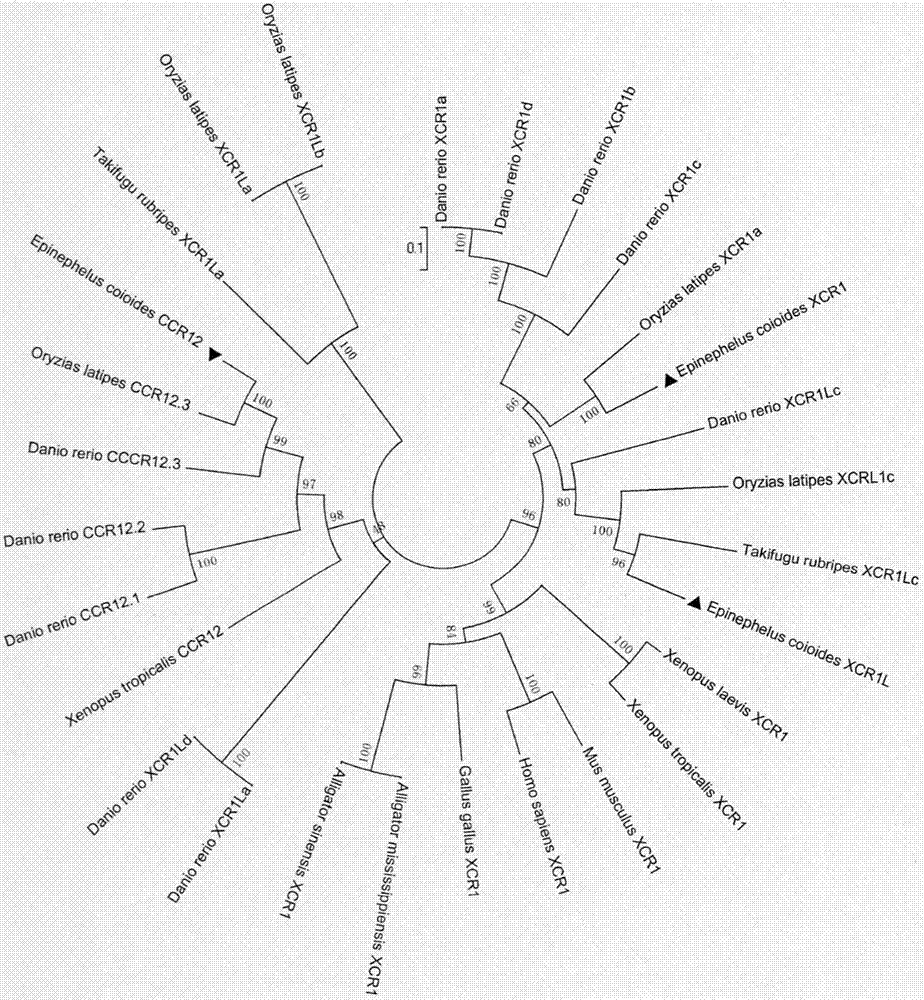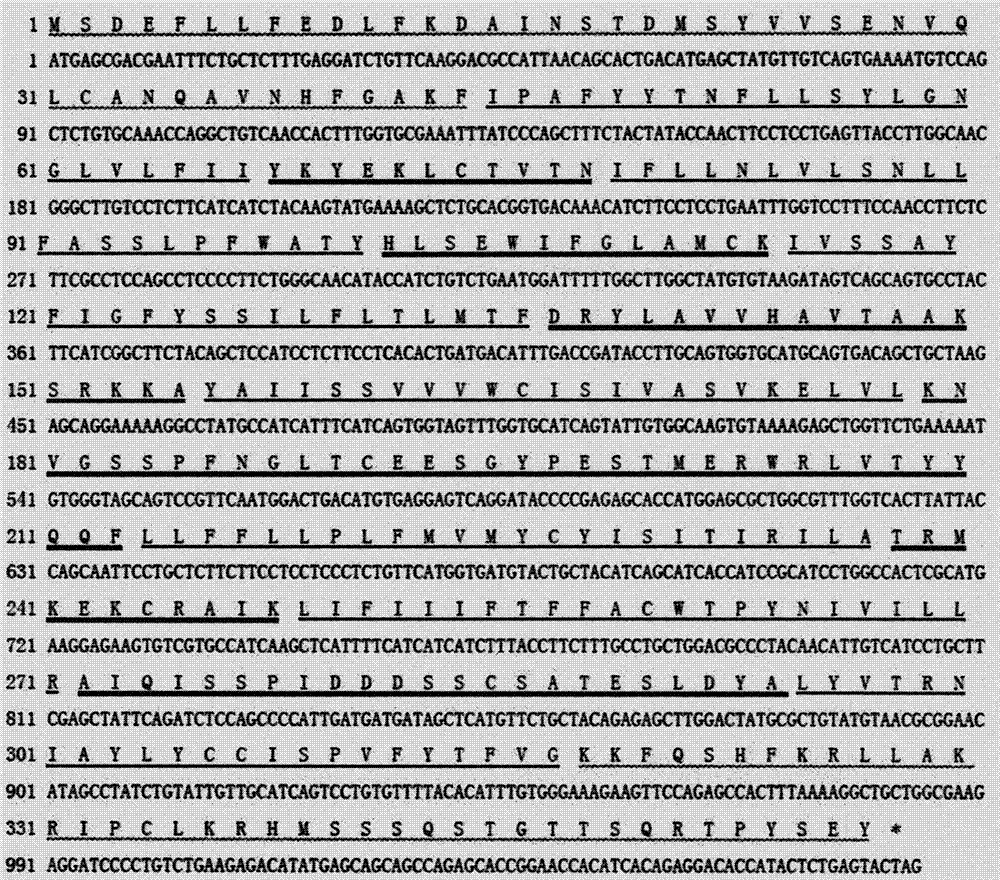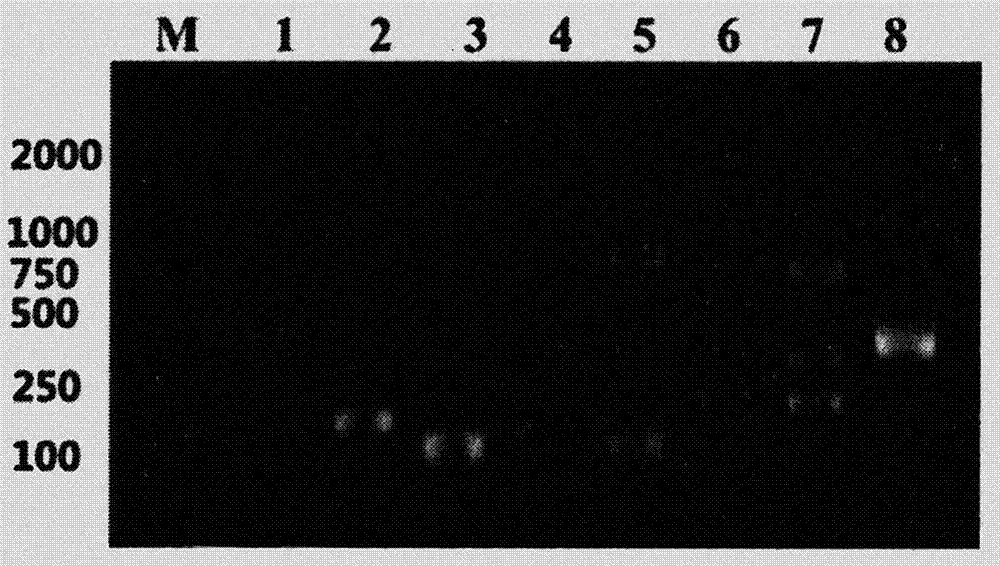Gene clone and prokaryotic expression and purification method of saddletail grouper CCR12
A technology of the oblique-banded grouper and CCR12, which is applied in the field of bioengineering, can solve the problems of lack, limitation of positive cell isolation and function research, and the in vitro expression of fish CCR12, and achieve the effect of improving efficiency
- Summary
- Abstract
- Description
- Claims
- Application Information
AI Technical Summary
Problems solved by technology
Method used
Image
Examples
Embodiment Construction
[0136] The present invention will be further described below in conjunction with specific embodiments, and the advantages and characteristics of the present invention will become clearer along with the description. However, the examples are merely exemplary and do not limit the scope of the present invention in any way. Those skilled in the art should understand that the details and forms of the technical solutions of the present invention can be modified or replaced without departing from the spirit and scope of the present invention, but these modifications and replacements all fall within the protection scope of the present invention.
[0137] A method for gene cloning, prokaryotic expression and purification of CCR12 of the grouper, the specific steps are as follows:
[0138] (1) Cloning and sequence analysis of grouper CCR12 gene:
[0139] 1. Extraction of total RNA from grouper spleen
[0140] (1) Quickly take out the frozen spleen from liquid nitrogen, grind it with l...
PUM
 Login to View More
Login to View More Abstract
Description
Claims
Application Information
 Login to View More
Login to View More - R&D Engineer
- R&D Manager
- IP Professional
- Industry Leading Data Capabilities
- Powerful AI technology
- Patent DNA Extraction
Browse by: Latest US Patents, China's latest patents, Technical Efficacy Thesaurus, Application Domain, Technology Topic, Popular Technical Reports.
© 2024 PatSnap. All rights reserved.Legal|Privacy policy|Modern Slavery Act Transparency Statement|Sitemap|About US| Contact US: help@patsnap.com










